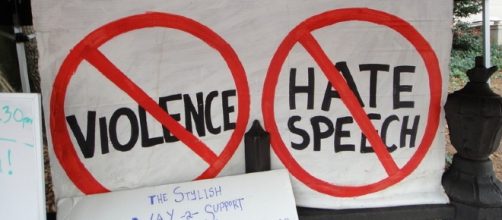Hate and hate speech are not foreign concepts in the United States. With the resurgence of white supremacist groups (17 percent increase in the last year) and rallies, the emphasis on ending hate has reached a critical point with strong support from both democrats and republicans.
Court cases
Between 1919 and 2007 there were twenty-two notable supreme court cases attempting to define what the right to free speech means. Relative to the events of the past few weeks, the following cases deal with the grey area of hate speech. In Schenck v. United States (1919) was determined that freedom of speech can be limited during war time.
This case introduced the term "clear and present danger" that remains important in outlining this first amendment right. In 1942, Chaplinsky v. New Hampshire declared that "fighting words" which cause injury or cause an immediate breach of peace are not protected. Brandenburg v. Ohio in 1969 determined that speech that calls for "imminent lawless action" is also an unprotected form of expression.
Determined by these cases, it is clear that the speech propagated at the white supremacist rally in Charlottesville, Virginia is an unprotected exception to the first amendment as it resulted in one death, multiple injuries as well as various criminal acts. However, due to the first amendment right to assemble and the fact that you can't be arrested based on the suspicion that you might incite violence, rallies that promote hate and fear are a continuing problem for American citizens.
Ending the hate
Hate speech is not now, nor may it ever be truly illegal. This obstacle doesn't mean that opponents of the problem should give up, but rather approach it from other angles. Shortly after the Charlottesville rally, the Southern Poverty Law Center wrote an article outlining "ten ways to fight hate".
- 1. Act: Do something. Apathy is an unacceptable response to hate and unless people speak up and address the problem, intolerance and hatred will persist.
- 2. Join forces: reach out to organizations and other groups that will help combat hate.
- 3. Support the victims: let them know you care for and support them. Offer your services and compassion.
- 4. Speak up: denounce hate groups in any way you can think of. Write letters, post on social media, call friends, family, representatives etc. to express your concerns and questions.
- 5. Educate yourself: do research and don't accept opinions as fact.
- 6. Create an alternative: draw attention away from hate and towards supporting differences.
- 7. Pressure leaders: they are there to represent the values of their communities so make sure your voice is heard.
- 8. Stay engaged: don't turn a blind eye to political conversations and expand your world view.
- 9. Teach acceptance: biases are learned early, make sure you aren't spreading hateful messages.
- 10. Dig deeper: check your privilege and examine your own misconceptions about race, gender, ability, sexuality and anything else you might judge without noticing.
Now is the time to end hate once and for all but it can't be done without a universal determination to do so. Ignoring and avoiding the issue is not an option. As a nation, we need to unite and declare a war on hate.


